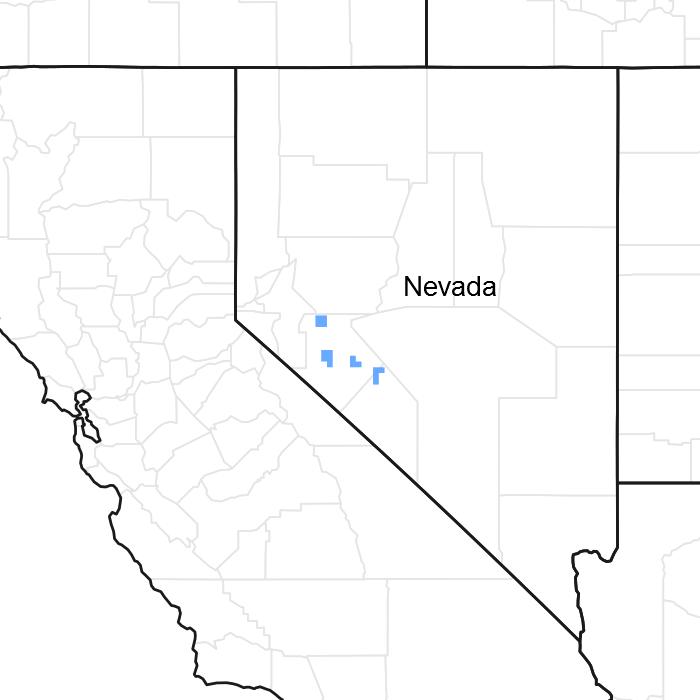Animal community
Livestock Interpretations:
This site has limited value for livestock grazing do to low forage production. Grazing management should be keyed to Indian ricegrass and perennial grass production. Indian ricegrass has good forage value for domestic sheep, cattle and horses. It supplies a source of green feed before most other native grasses have produced much new growth. Bottlebrush squirreltail is very palatable winter forage for domestic sheep of Intermountain ranges. Domestic sheep relish the green foliage. Overall, bottlebrush squirreltail is considered moderately palatable to livestock.
Shadscale is a valuable browse species, providing a source of palatable, nutritious forage for a wide variety of livestock. Shadscale provides good browse for domestic sheep. Shadscale leaves and seeds are an important component of domestic sheep and cattle winter diets. Shockley’s wolfberry is sometimes used as forage by livestock. Palatability of browse is presumably fair to low. This species is used as forage only when more desirable species are unavailable. Budsage is palatable and nutritious forage for domestic sheep in the winter and spring although it is known to cause mouth sores in lambs. Budsage can be poisonous or fatal to calves when eaten in quantity. Budsage, while desired by cattle in spring, is poisonous to cattle when consumed alone. Bailey’s greasewood is an important winter browse plant for domestic sheep and cattle. It also receives light to moderate use by domestic sheep and cattle during spring and summer months. Greasewood contains soluble sodium and potassium oxalates that may cause poisoning and death in domestic sheep and cattle if large amounts are consumed in a short time.
Stocking rates vary over time depending upon season of use, climate variations, site, and previous and current management goals. A safe starting stocking rate is an estimated stocking rate that is fine tuned by the client by adaptive management through the year and from year to year.
Wildlife Interpretations:
Shadscale is a valuable browse species, providing a source of palatable, nutritious forage for a wide variety of wildlife particularly during spring and summer before the hardening of spiny twigs. It supplies browse, seed, and cover for birds, small mammals, rabbits, deer, and pronghorn antelope. Palatability of Shockley’s wolfberry browse is presumably fair to low. This species is used as forage only when more desirable species are unavailable. Budsage is palatable, nutritious forage for upland game birds, small game and big game in winter. Budsage is rated as "regularly, frequently, or moderately taken" by mule deer in Nevada in winter and is utilized by bighorn sheep in summer, but the importance of budsage in the diet of bighorns is not known. Bud sage comprises 18 – 35% of a pronghorn’s diet during the spring where it is available. Chukar will utilize the leaves and seeds of bud sage. Budsage is highly susceptible to effects of browsing. It decreases under browsing due to year-long palatability of its buds and is particularly susceptible to browsing in the spring when it is physiologically most active. Bailey’s greasewood is an important winter browse plant for big game animals and a food source for many other wildlife species. It also receives light to moderate use by mule deer and pronghorn during spring and summer months.
Indian ricegrass is eaten by pronghorn in "moderate" amounts whenever available. In Nevada it is consumed by desert bighorns. A number of heteromyid rodents inhabiting desert rangelands show preference for seed of Indian ricegrass. Indian ricegrass is an important component of jackrabbit diets in spring and summer. In Nevada, Indian ricegrass may even dominate jackrabbit diets during the spring through early summer months. Indian ricegrass seed provides food for many species of birds. Doves, for example, eat large amounts of shattered Indian ricegrass seed lying on the ground. Bottlebrush squirreltail is a dietary component of several wildlife species. Bottlebrush squirreltail may provide forage for mule deer and pronghorn.
Hydrological functions
Runoff is very low. Permeability is moderately rapid.
Recreational uses
Aesthetic value is derived from the diverse floral and faunal composition and the colorful flowering of wild flowers and shrubs during the spring and early summer. This site offers rewarding opportunities to photographers and for nature study. This site is used for camping and hiking and has potential for upland and big game hunting.
Other products
Indian ricegrass was traditionally eaten by some Native American peoples. The Paiutes used seed as a reserve food source. Seeds of shadscale were used by Native Americans of Arizona, Utah and Nevada for bread and mush. The leaves, seeds and stems of greasewood are edible.
Other information
Bottlebrush squirreltail is tolerant of disturbance and is a suitable species for revegetation.



